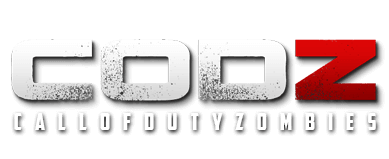Nuketown Location – Nevada, USA

http://en.wikipedia.org/wiki/Mass%E2%80%93energy_equivalence
The Nevada National Security Site (NNSS), previously the Nevada Test Site (NTS), is a United States Department of Energy reservation located in southeastern Nye County, Nevada, about 65 miles (105 km) northwest of the city of Las Vegas. Formerly known as the Nevada Proving Grounds, the site was established on 11 January 1951 for the testing of nuclear devices, covering approximately 1,360 square miles (3,500 km2) of desert and mountainous terrain. Nuclear testing at the Nevada Test Site began with a 1-kilotonne-of-TNT (4.2 TJ) bomb dropped on Frenchman Flat on 27 January 1951. Many of the iconic images of the nuclear era come from the NTS.
During the 1950s, the mushroom clouds from atmospheric tests could be seen for almost 100 mi (160 km). The city of Las Vegas experienced noticeable seismic effects, and the distant mushroom clouds, which could be seen from the downtown hotels, became tourist attractions. St. George, Utah, received the brunt of the fallout of above-ground nuclear testing in the Yucca Flats/Nevada Test Site. Winds routinely carried the fallout of these tests directly through St. George and southern Utah. Marked increases in cancers, such as leukemia, lymphoma, thyroid cancer, breast cancer, melanoma, bone cancer, brain tumors, and gastrointestinal tract cancers, were reported from the mid-1950s through 1980.
The Nevada Test Site contains 28 areas, 1,100 buildings, 400 miles (640 km) of paved roads, 300 miles of unpaved roads, ten heliports, and two airstrips. The most-recent test was a sub-critical test of the properties of plutonium, conducted underground on December 7, 2012.
Storax Sedan was a shallow underground nuclear test conducted in Area 10 of Yucca Flat at the Nevada National Security Site on 6 July 1962 as part of Operation Plowshare, a program to investigate the use of nuclear weapons for mining, cratering, and other civilian purposes. The radioactive fallout from the test contaminated more US residents than any other nuclear test. The Sedan Crater is the largest man-made crater in the United States, and is listed on the National Register of Historic Places.
Sedan was a thermonuclear device with a fission yield less than 30% and a fusion yield about 70%. The explosive device was lowered into a shaft drilled into the desert alluvium 194 m (636 ft) deep. The fusion-fission blast had a yield equivalent to 104 kilotons of TNT (435 terajoules) and lifted a dome of earth 90 m (300 ft) above the desert floor before it vented at three seconds after detonation, exploding upward and outward displacing more than 11,000,000 t (11,000,000 long tons; 12,000,000 short tons) of soil. The resulting crater is 100 m (330 ft) deep with a diameter of about 390 m (1,280 ft). A circular area of the desert floor five miles across was obscured by fast-expanding dust clouds moving out horizontally from the base surge, akin to pyroclastic surge. The blast caused seismic waves equivalent to an earthquake of 4.75 on the Richter scale. The radiation level on the crater lip at 1 hour after burst was 500 R per hour (130 mC/(kg·h)).
Within 7 months of the excavation, the bottom of the crater could be safely walked upon with no protective clothing and photographs were taken.
Nuketown Loading Screen

Aerial View of the Sedan Crater

Sedan Crater is the result of the Sedan nuclear test and is located within the Nevada Test Site, just 12 miles (19 km) southwest of Groom Lake, Nevada (Area 51). The crater was listed on the National Register of Historic Places on March 21, 1994. The crater is a man-made object that can be seen from earth orbit with the unaided eye.
The crater is the result of the displacement of 12,000,000 short tons (11,000,000 t) of earth. Over 10,000 visitors per year visit the crater through free monthly tours offered by the U.S. Department of Energy, National Nuclear Security Administration Nevada Site Office.
Because the craters at the Nevada Test Site (NTS) have features similar to the topography of Moon craters all of the 12 American Astronauts who have walked on the moon trained at the Nevada Test Site before their missions.
Sedan Crater



Recommended Comments
There are no comments to display.
Create an account or sign in to comment
You need to be a member in order to leave a comment
Create an account
Sign up for a new account in our community. It's easy!
Register a new accountSign in
Already have an account? Sign in here.
Sign In Now